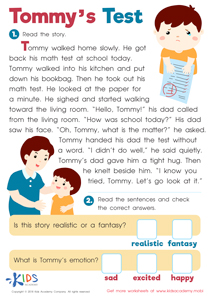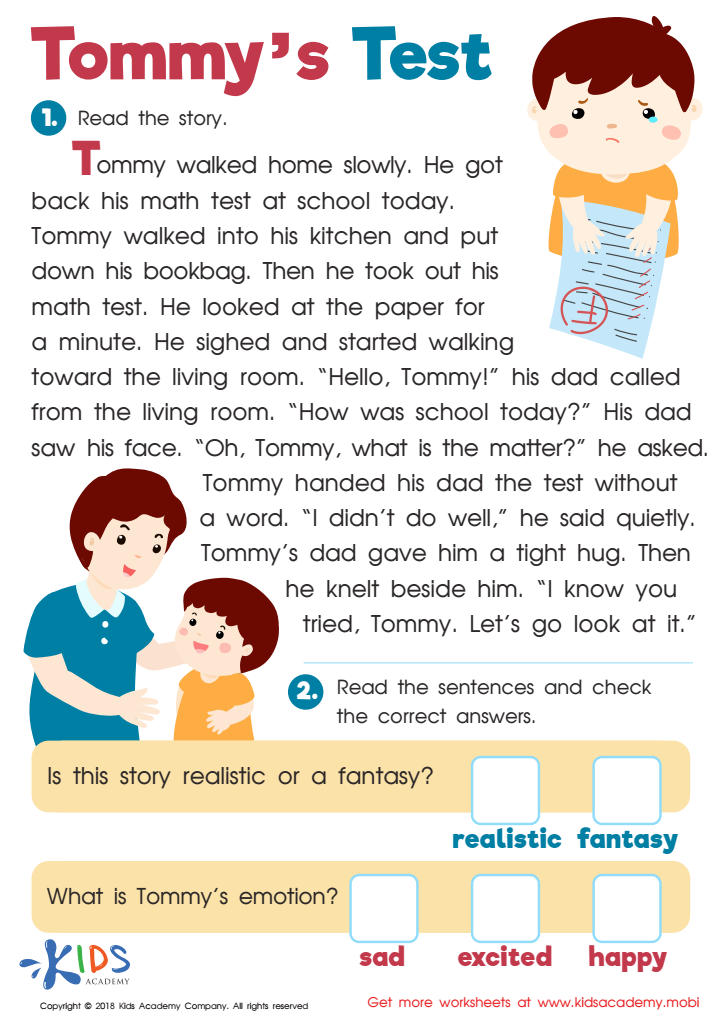Realistic Fiction - Lesson for Grade 3, Chapter - Review Across Genres
In the "Realistic Fiction" lesson, part of the "Reading Literature" unit for Grade 3 students, learners will delve into the fascinating world of stories that, while fictional, could very well happen in real life. This lesson is nestled within the "Review Across Genres" chapter, providing students with a comprehensive understanding of how realistic fiction compares and contrasts with other literary genres they have explored.
Through engaging activities like the "Tommy's Test Worksheet," students will practice identifying characteristics that define realistic fiction, such as believable characters, settings that exist in the real world, and events that could actually occur. This hands-on approach not only enhances reading comprehension skills but also encourages critical thinking as students evaluate the elements that make a story relatable and authentic.
Understanding realistic fiction is important because it helps students develop empathy and broaden their perspectives by immersing themselves in the lives of characters who may live differently but face similar challenges and emotions. Additionally, this lesson supports the development of inference skills as students learn to draw conclusions based on the context and details presented in the stories, a critical skill in both academic and real-world contexts.

-
Activity 1 / Tommys Test Worksheet
Reading short stories to your students is a great way to establish a bond between the both of you, and also a good way to teach them some new words and lessons. The story in this worksheet introduces your child to some new words, as well as uses simple words they are already familiar with. Read the story aloud to them. Read it a second time, and make sure that they are listening to all the little details. At the end of the story, ask them the two questions at the bottom of the printout. Help them check the correct answers.

